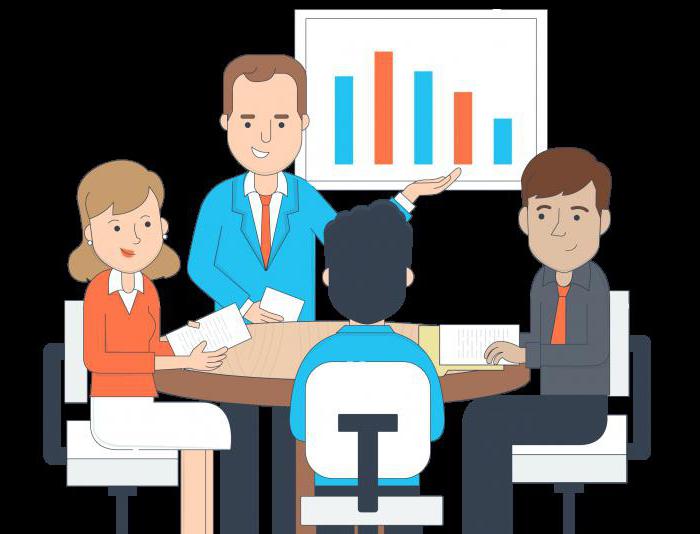For many, the first days, weeks at a new job is a great stress. New team, other requirements, other business relationships, tons of unknown information. At the same time, you need to try not to make stupid mistakes and show yourself from the best side. It is advisable to prepare for such a brainstorming session in advance. Therefore, we consider the concept of "adaptation at the workplace" from several angles.
What is adaptation?
Adaptation at a new workplace is the period of familiarization of an employee with previously unknown activities, organization, team, regulation of their behavior in accordance with unusual requirements.

According to statistics, most newly hired employees leave their place of work at this particular time. Reasons: the complexity of the adaptation process, the discrepancy of the real situation to their expectations.
For the adaptation of a new employee to be successful and painless, it must be a two-way process. The personnel department, management, and colleagues should in every way contribute to the "infusion" of a novice into their organization and team. Depending on the support and assistance provided, adaptation at the workplace can proceed in various ways:
- Preservation of individualism - the new employee does not deny the main values of the company, but ignores the secondary (for example, corporate traditions, holidays), tries to stay a little apart.
- Mimicry - an employee, on the contrary, supports secondary values, and denies the main ones, hiding this from the collective. Such newcomers often leave their new jobs.
- Denial - the employee does not hide his hostility to the routines existing in the company. He will call them the reason for his early dismissal.
- Conformism - the employee sincerely accepts new rules, values, responsibilities, safely becomes the "cog of the system."
Adaptation steps
Let's figure out what stages of adaptation an employee goes through at a new workplace:
- External reorientation. It is difficult for a person to accept new values and routines; he painfully perceives something he is not used to, with which he does not agree. However, it seeks to hide these negative emotions.
- Gradual mutual recognition of the employee by the team and vice versa.
- Perception of team values without including them in their value system.
- The gradual adoption of new rights and obligations, corporate culture, as well as the restructuring of their personality, behavior under new conditions.
- Harmonious fusion of personality with the team.

Failure at any of these stages often becomes a reason for dismissal at will.
Adaptation parts
Adaptation at the workplace is divided into two parts: primary and secondary. The first is the appearance of a new employee in the team. Her goals:
- speedy infusion of a beginner into work;
- reallocation of work responsibilities;
- full replacement of the departed employee;
- socialization in the team;
- vocational guidance.

Secondary adaptation at the workplace overtakes an employee during promotion, retraining, transfer to another department, workshop, etc. The goals of this period:
- collective climate stabilization;
- achieving full compliance with the requirements for a new position;
- adaptation to a new status;
- changing your role in the team.
Adapting person techniques
Speaking about adaptation methods in the workplace, one cannot fail to mention the unconscious techniques that psychologists identify in a person who gets used to a new team:
- "Meet by clothes." The first thing a beginner draws attention to is the appearance, clothing, and behavior of future colleagues.Such a superficial assessment at the initial stage helps to build an idea of the personality and business qualities of each member of the new team.
- Stratification. The new employee divides his colleagues into mini-groups: careerists, helpers, informal leaders, cranks, comedians, first ladies, outcasts, etc. He begins to assess their well-being, ability to keep themselves in a team, build relationships with superiors, degree of disposition towards themselves . Based on this, a new member begins to build appropriate communication with everyone.
- Group Identification. At this stage, the employee chooses for himself one of the strategies he defines and begins to build his behavior according to his status. Belonging to a certain group creates a feeling of security, a person begins to feel a little in his new team.
- Intergroup discrimination. The employee exalts “his” group over others, is indulgent towards others, always finds the advantages of his choice.

Types of adaptation in the workplace
The entire adaptation process is divided into four groups:
- psychophysiological;
- professional (familiarization with the profession);
- socio-psychological (acquaintance with the team);
- organizational (familiarization with the company itself).
A more detailed analysis of them:
- Organizational adaptation. Successful activity in a new workplace is possible only when a person thoroughly knows everything about his company: history, tasks, goals, development prospects, its achievements and unpleasant moments in history. It is important to have an idea of its structure, managers, answers to vital questions: “Where is the personnel department, dining room, service parking?”, “Where can I get a tabulagram?”, “Who should I contact with questions about employment?” etc. The employer's duty is to convey to the beginner all this information in a concise and structured form, and the latter to try to "digest" it in a short time.
- Socio-psychological adaptation of personnel in the workplace. Intimate acquaintance with the team, the norms of corporate culture, the establishment of interpersonal and business communication, pouring into informal groups. The newcomer not only gets acquainted with the new standards of behavior, he should already begin to follow them, while the team is wary of him, evaluates him, makes an opinion. Therefore, for most, this adaptation is the most difficult.
- Professional adaptation in the workplace. Filling knowledge gaps, retraining, acquaintance with new work standards, its specifics. To facilitate this type of addiction, many organizations practice rotation, mentoring, briefing, and the “student” period.
- Psychophysical adaptation of employees in the workplace. This is a restructuring of your body, habits of a new regime of work and rest - shift work schedule, business trips, irregular working hours, "home office". This also includes adaptation to a new workplace, restrooms and hygiene, to an unusual route to work.

The duration of the adaptation period
The adaptation period at the workplace does not have any clearly defined boundaries: someone manages to harmoniously join the team in a couple of weeks, someone needs a few months or even a couple of years. In this case, three months are considered the optimal period - the duration of the trial period.
The following characteristics of the employee indicate the end of the adaptation period:
- copes with all the tasks assigned to him, including non-standard;
- bears responsibility for his actions;
- He knows the structure of the company well, is oriented among managers and colleagues, and is in a non-conflict relationship with them;
- successfully mastered the types of equipment, equipment, computer programs necessary for work, etc .;
- knows the system of punishments and rewards of the company;
- complies with corporate culture standards;
- enters into one of the informal groups of the collective.
Introduction to the position
As already mentioned, the adaptation of an employee in a new workplace is a two-way process. In a successful and developing company, a newcomer will not be satisfied with the “young fighter's course”, but will do everything possible to ensure his smooth and painless entry into the team, getting used to the workplace. Usually, an induction program is drawn up for this. It varies depending on the following conditions:
- features of the work of a beginner;
- his status and level of responsibility;
- the collective where he will go;
- personal characteristics of the future employee identified at the interview.

The following persons participate in the program:
- direct managers;
- colleagues who can become direct mentors;
- employees from other departments with whom the newcomer will be closely associated;
- HR department.
The program includes three large stages.
Before the employee arrives
So that the adaptation at the new workplace is quick and successful, before the first working day:
- Checks the relevance of the job description.
- An unofficial novice "cartridge" is assigned.
- His workplace is being prepared.
- The future team is notified of the addition to the composition.
- All necessary information files, passes, administrative documents are generated.
- A call is made to a future employee to find out about his willingness to go to work.
First work day
During this period, the program invites the team to do the following:
- Dismantle the job responsibilities with the newcomer.
- To familiarize him in detail with the internal labor schedule.
- Talk about corporate traditions, rules, private moments.
- To familiarize with the structure of the organization.
- Carry out the necessary briefings: safety measures, first aid, fire safety, etc.
- Provide a list of all possible communications, contacts that he may need.
- Presentation of dress code rules.
- Acquaintance of a beginner with immediate supervisors, colleagues.
- Excursion to the place of work: show canteens, latrines, places of rest, etc.
The rest of the adaptation period
At this time, procedures such as:
- Familiarization with the rules of reporting.
- Demonstration of labor requirements, its results.
- Acquaintance with the administrative system of the organization.
- Development of an individual retraining system for a new employee.
- Familiarization with the specifics of his work, the nuances that he needs to know.

Methods for Successful Adaptation
In order for the adaptation at the beginner's workplace to proceed at an accelerated pace, many corporations use the following methods:
- Informal accompaniment is an admonition to a new employee as a mentor, a “patron”.
- Carrying out events - in honor of the arrival of a new employee, a corporate party is organized, where in a relaxed atmosphere he is introduced to the norms, rules, etiquette of the organization.
- Corporate PR - a universal directory is being developed containing answers to all questions of beginners.
- Team training - an event is held if an employee fails to join the team. It expresses the views of both parties, claims; trying to establish a dialogue.
- Briefing - the employee gets acquainted with the new requirement under the strict guidance of colleagues who answer all his questions.
- Personal account, personal mail - to these addresses the beginner receives letters of instruction, helping him to gradually understand the environment.
Promotion of adaptation
Many successful corporations today pay great attention to adapting a new employee in their team. This occurs for several reasons:
- the shorter the adaptation period, the greater the return on employee labor;
- negative feedback from former employees who left due to a number of difficulties during the adaptation period is a serious blow to the company's image;
- mentoring helps to increase the creative potential of long-working employees;
- upon dismissal of an employee and finding a replacement for him, the company will again spend money on recruitment, training;
- a detailed and effective adaptation program - plus in the struggle with competitors;
- the friendly attitude of the new team is one of the main reasons for unlocking the potential of the newcomer.
Adaptation at a new workplace is the most difficult and important in labor activity. It is important for the employee at this stage to quickly and successfully get comfortable in an unfamiliar team, at a new workplace, and for the company in every way to promote this, and not to hinder.